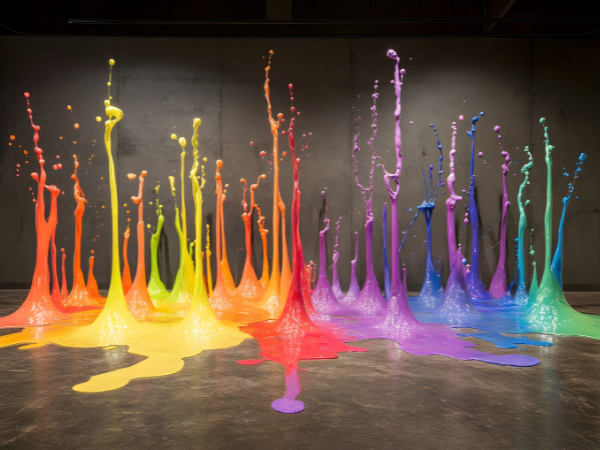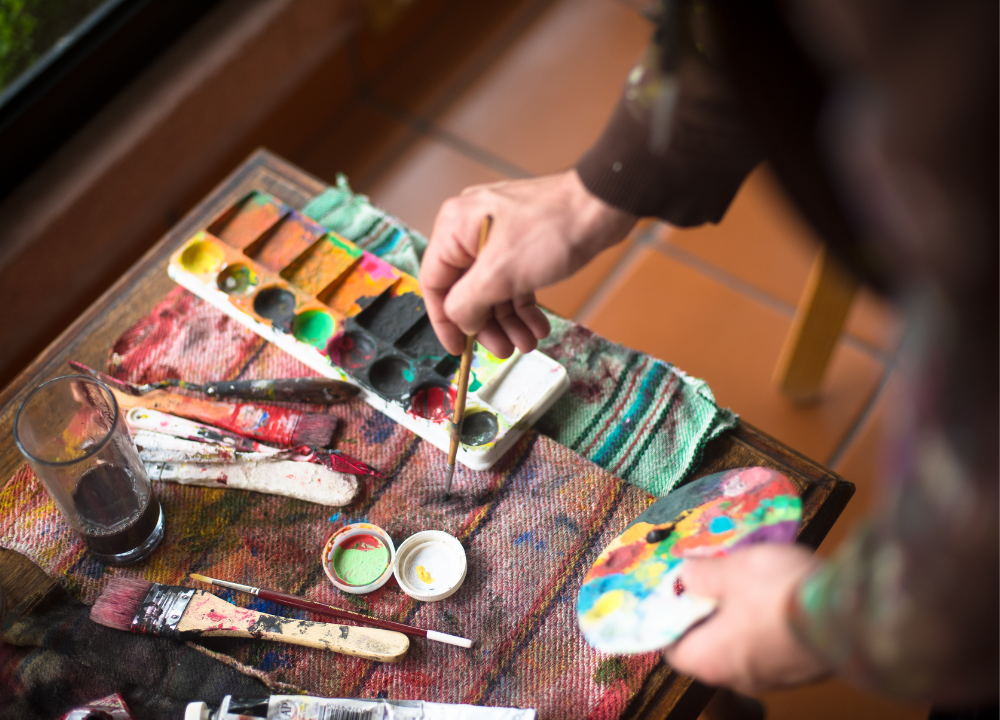In 2025, artists are reimagining nature through the lens of technology, sustainability, and symbolism. From immersive digital seascapes to sculptural representations of eternal cycles, this year’s most compelling art installations explore the fragile beauty and resilience of the natural world. These works don’t just depict nature—they invite us to experience it, question it, and reconnect with it in new ways.
The Fusion of Nature and Technology in Contemporary Art
Nature and technology, once seen as opposites, are now converging in the art world. Artists are using digital tools to simulate, preserve, and reinterpret natural environments, creating installations that are both futuristic and deeply organic.
Key elements of this fusion include:
- Digital Landscapes – Simulated oceans, forests, and skies rendered in real-time projections.
- Sensor-Based Interaction – Installations that respond to movement, sound, or temperature.
- AI-Generated Ecosystems – Artificial intelligence used to mimic natural growth and decay.
- Augmented Reality (AR) – Layering digital flora and fauna over physical spaces.
- Bioluminescent Effects – LED and fiber optics mimicking natural light phenomena.
This blending of the organic and the artificial challenges our understanding of what is “natural” and encourages a more nuanced view of our relationship with the environment.
Digital Oceans: Immersive Seascapes and Climate Awareness
One of the most striking trends in 2025 is the rise of digital ocean installations. These immersive environments use projection, sound, and scent to recreate the experience of being underwater—while also highlighting the impact of climate change on marine life.
Notable features of digital ocean installations:
- 360° Projection Domes – Surrounding viewers with moving water, coral reefs, and marine creatures.
- Real-Time Data Feeds – Visualizing ocean temperatures, pollution levels, and biodiversity loss.
- Submerged Soundscapes – Hydrophone recordings of whale songs and reef life.
- Interactive Currents – Motion sensors that let visitors “swim” through digital currents.
- Plastic Debris Simulations – Artistic representations of ocean pollution.
These installations are more than beautiful—they’re educational and urgent, reminding us of the ocean’s fragility and our role in its preservation.
The Glass Ouroboros: Symbolism of Cycles and Regeneration
The ouroboros—an ancient symbol of a serpent eating its own tail—has found new life in 2025’s art scene, particularly in glass-based installations. Artists are using this motif to explore themes of ecological cycles, rebirth, and the interconnectedness of life.
Common themes in glass ouroboros installations:
- Circular Sculptures – Transparent loops representing life cycles and sustainability.
- Recycled Glass – Materials sourced from discarded bottles and industrial waste.
- Light Refraction – Using prisms and lenses to create shifting, organic patterns.
- Embedded Flora – Preserved moss, seeds, or algae sealed within the glass.
- Kinetic Movement – Slowly rotating or pulsing structures to mimic natural rhythms.
These works serve as meditative focal points, encouraging viewers to reflect on the cyclical nature of ecosystems and the possibility of renewal.
Eco-Materials and Living Installations
Sustainability is no longer a side note—it’s central to the creative process. Artists are turning to biodegradable, recycled, and living materials to construct installations that evolve over time or return to the earth.
Key materials and methods:
- Mycelium Structures – Grown from mushroom roots, strong yet compostable.
- Algae Panels – Living walls that photosynthesize and purify air.
- Reclaimed Wood and Metal – Giving new life to industrial remnants.
- Seed-Embedded Paper – Artworks that can be planted after exhibition.
- Solar-Powered Components – Using renewable energy to power kinetic or light elements.
These installations blur the line between art and ecology, proving that beauty and environmental responsibility can coexist.
Soundscapes of the Wild: Audio as Environmental Memory
In 2025, sound is emerging as a powerful medium for environmental storytelling. Artists are capturing and manipulating natural sounds to create immersive audio installations that evoke place, memory, and loss.
Elements of sound-based nature art:
- Field Recordings – Birdsong, wind, rain, and animal calls from remote locations.
- Spatial Audio – Surround-sound systems that mimic natural acoustics.
- Voice and Narrative – Indigenous stories or scientific commentary layered with sound.
- Silence and Absence – Highlighting species or habitats that have disappeared.
- Interactive Sound Triggers – Footsteps or gestures that activate specific sounds.
These installations invite deep listening and emotional connection, turning sound into a vessel for environmental empathy.
Bio-Art and the Ethics of Living Media
Bio-art—art that uses living organisms as a medium—is pushing boundaries in 2025. From bacterial paintings to genetically modified plants, these works raise questions about control, collaboration, and the ethics of manipulating life.
Examples of bio-art practices:
- Petri Dish Portraits – Bacteria grown into intricate designs.
- CRISPR Sculptures – Genetically edited plants with altered colors or shapes.
- Symbiotic Installations – Art that requires care and cohabitation with living organisms.
- Bioluminescent Displays – Using glowing algae or fungi as light sources.
- Ethical Statements – Works that critique biotechnology or explore bioethics.
Bio-art challenges viewers to consider the boundaries between art, science, and life itself—often provoking as much as it inspires.
Nature Reimagined Through AI and Machine Learning
Artificial intelligence is not just a tool—it’s becoming a collaborator. In 2025, artists are using machine learning to generate new interpretations of nature, from dreamlike landscapes to predictive models of ecological change.
AI-driven nature art includes:
- GAN Landscapes – AI-generated images of fictional ecosystems.
- Predictive Forests – Visualizations of how forests might evolve under climate scenarios.
- Algorithmic Growth Patterns – Simulating plant growth using code.
- AI-Poetry and Text – Nature-inspired verse written by neural networks.
- Interactive AI Guides – Chatbots that narrate the natural world in real time.
These works expand our imagination of what nature could be, offering both warnings and wonders through the lens of artificial intelligence.
The Future of Nature in Art: Where Do We Go From Here?
As we look beyond 2025, the role of nature in art is likely to deepen. Artists will continue to explore how we perceive, protect, and participate in the natural world—often using new tools to do so.
Emerging directions to watch:
- Climate-Responsive Installations – Art that changes with weather or environmental data.
- Decentralized Eco-Art – Community-driven projects using blockchain or open-source platforms.
- Virtual Nature Sanctuaries – Digital spaces for meditation, education, and activism.
- Cross-Species Collaboration – Art made with animals, plants, or microbial life.
- Restorative Art Practices – Projects that actively restore habitats or ecosystems.
Nature in art is no longer just a subject—it’s a collaborator, a medium, and a message. As artists continue to innovate, they help us reimagine our place in the living world.




